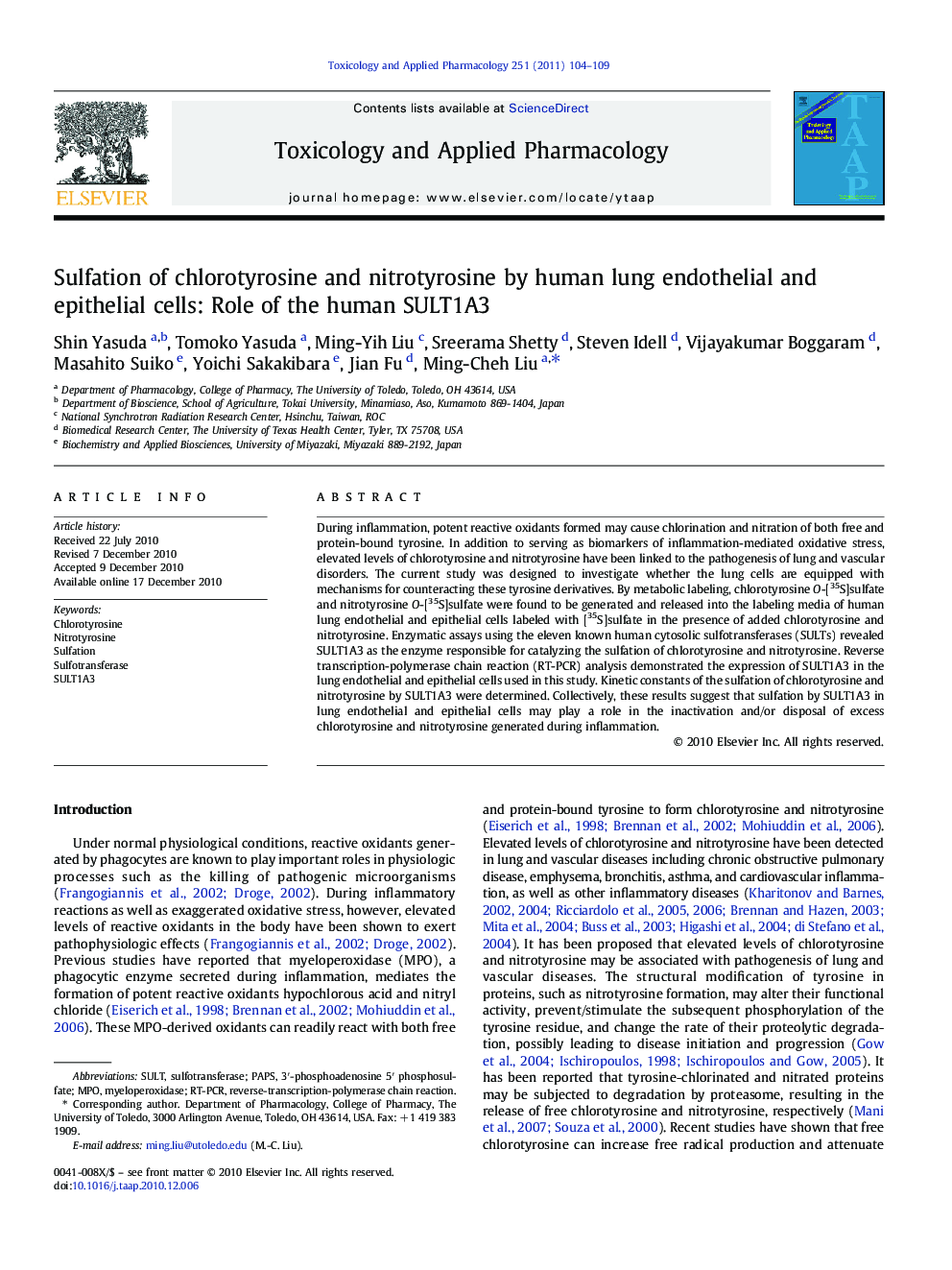| Article ID | Journal | Published Year | Pages | File Type |
|---|---|---|---|---|
| 2569966 | Toxicology and Applied Pharmacology | 2011 | 6 Pages |
During inflammation, potent reactive oxidants formed may cause chlorination and nitration of both free and protein-bound tyrosine. In addition to serving as biomarkers of inflammation-mediated oxidative stress, elevated levels of chlorotyrosine and nitrotyrosine have been linked to the pathogenesis of lung and vascular disorders. The current study was designed to investigate whether the lung cells are equipped with mechanisms for counteracting these tyrosine derivatives. By metabolic labeling, chlorotyrosine O-[35S]sulfate and nitrotyrosine O-[35S]sulfate were found to be generated and released into the labeling media of human lung endothelial and epithelial cells labeled with [35S]sulfate in the presence of added chlorotyrosine and nitrotyrosine. Enzymatic assays using the eleven known human cytosolic sulfotransferases (SULTs) revealed SULT1A3 as the enzyme responsible for catalyzing the sulfation of chlorotyrosine and nitrotyrosine. Reverse transcription-polymerase chain reaction (RT-PCR) analysis demonstrated the expression of SULT1A3 in the lung endothelial and epithelial cells used in this study. Kinetic constants of the sulfation of chlorotyrosine and nitrotyrosine by SULT1A3 were determined. Collectively, these results suggest that sulfation by SULT1A3 in lung endothelial and epithelial cells may play a role in the inactivation and/or disposal of excess chlorotyrosine and nitrotyrosine generated during inflammation.
